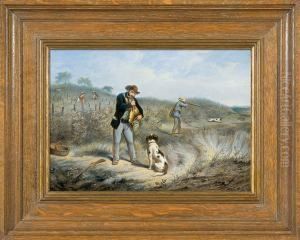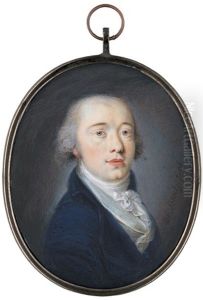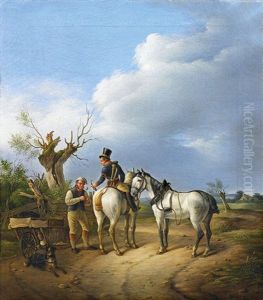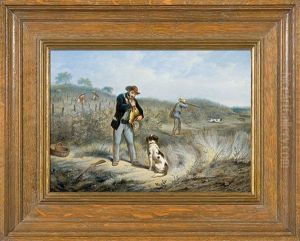Johann Heinrich Carl Schulz Paintings
Johann Heinrich Carl Schulz, a figure not widely known outside the circles of specialized art historical scholarship, was a German painter and architect born in 1803. His life and work are emblematic of the 19th century's artistic movements in Germany, where the Romantic movement's influence was waning, and new artistic directions were being explored. Schulz's contributions, though not as prominently recognized as those of his contemporaries, provide insight into the period's broader cultural and artistic shifts.
Schulz's early life and education were rooted in the rich artistic traditions of Germany. He showed an early inclination towards the arts, leading him to pursue formal education in both painting and architecture. These dual interests informed his career, allowing him to explore the interplay between architectural spaces and their artistic ornamentation. His works, though not extensively documented, are known to reflect the Romantic period's fascination with nature, emotion, and individualism, yet they also hint at the emerging Realist tendencies that would later dominate European art.
Throughout his career, Johann Heinrich Carl Schulz undertook various projects that showcased his versatility as an artist and an architect. He was involved in designing buildings that are noted for their blend of functionalism and aesthetic appeal, a testament to his understanding of architectural principles and his ability to integrate them with artistic vision. In painting, Schulz's oeuvre includes landscapes and portraits, the former capturing the transient beauty of nature with a keen eye for detail and the latter offering glimpses into the personality and status of his subjects through subtle expressions and meticulous composition.
Despite his contributions, Schulz did not achieve the level of fame and recognition attained by some of his peers. The reasons for this are manifold, including the possible overshadowing by more dominant figures of the time and the changing tastes of the art world. Nevertheless, his work remains an important part of the 19th-century German artistic landscape, offering valuable insights into the era's aesthetic and cultural transitions. Johann Heinrich Carl Schulz passed away in 1873, leaving behind a legacy that, while not widely celebrated, is cherished by those who appreciate the depth and diversity of German art during this period.





